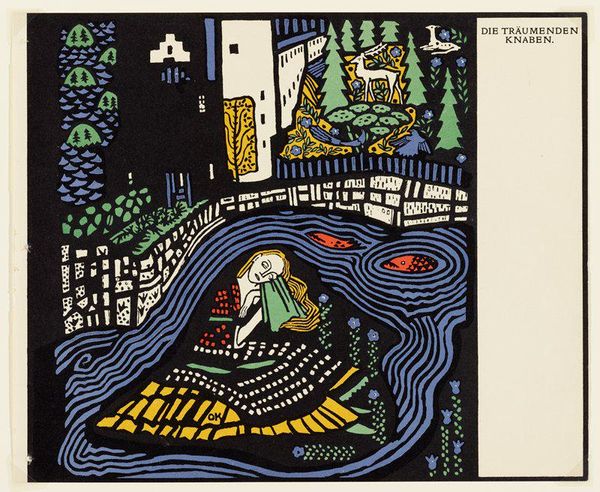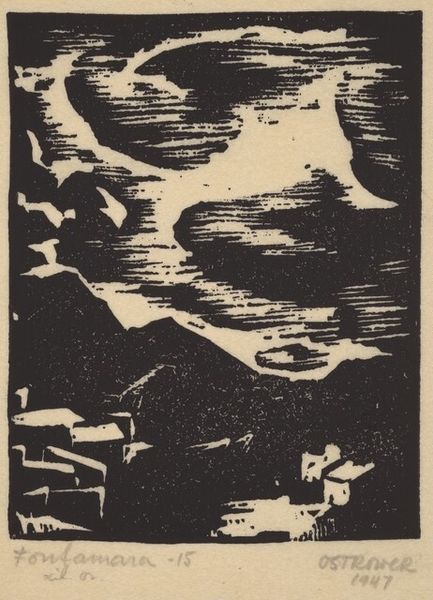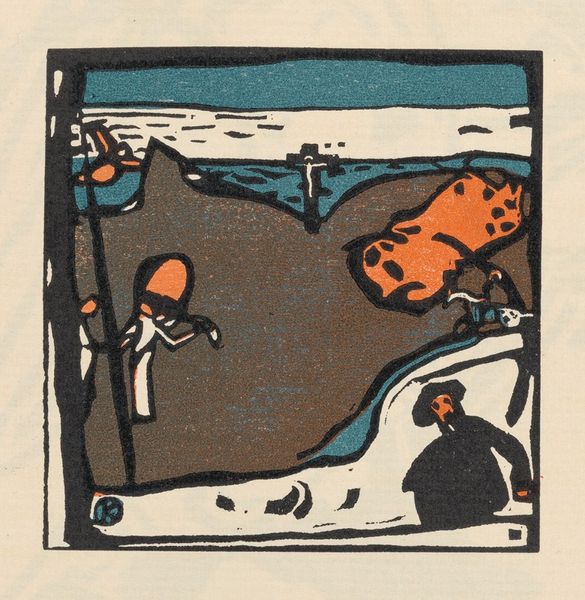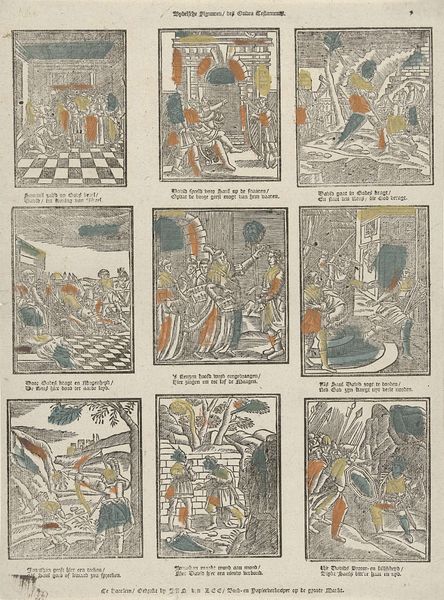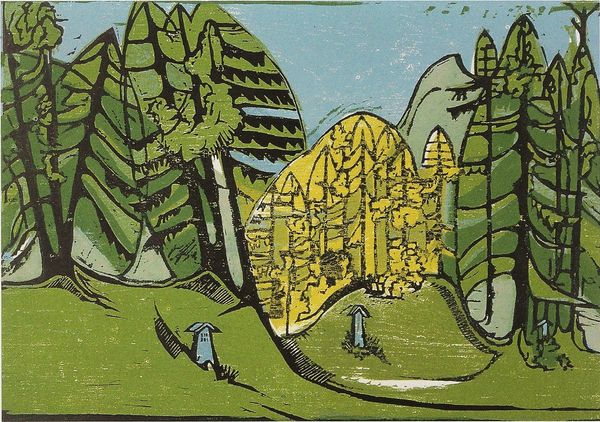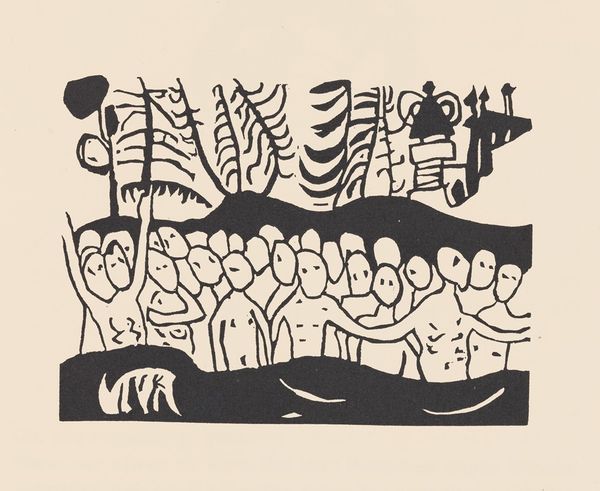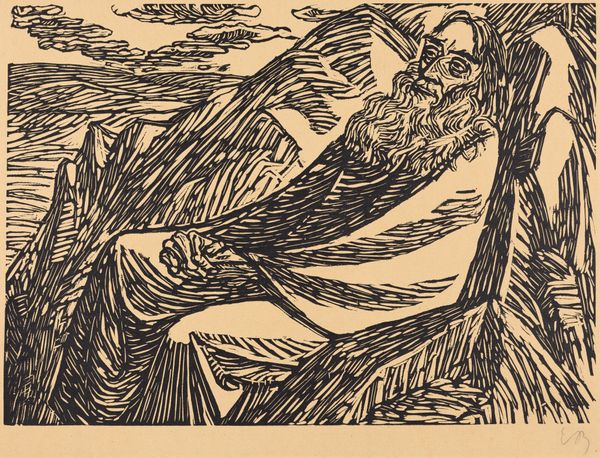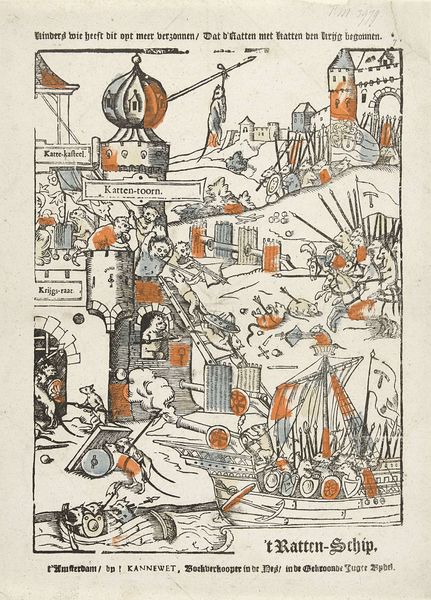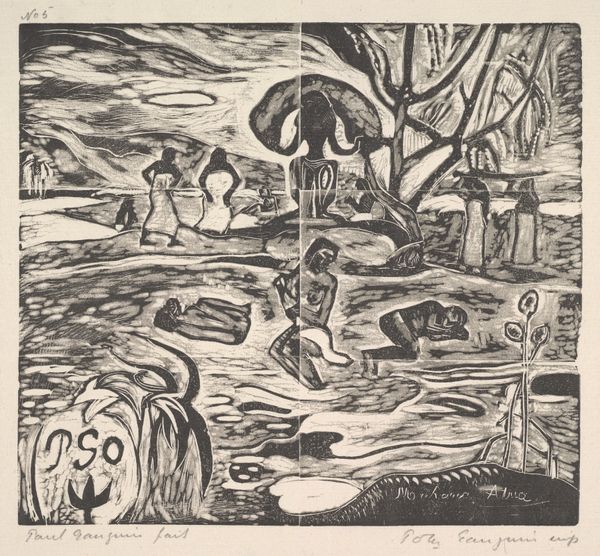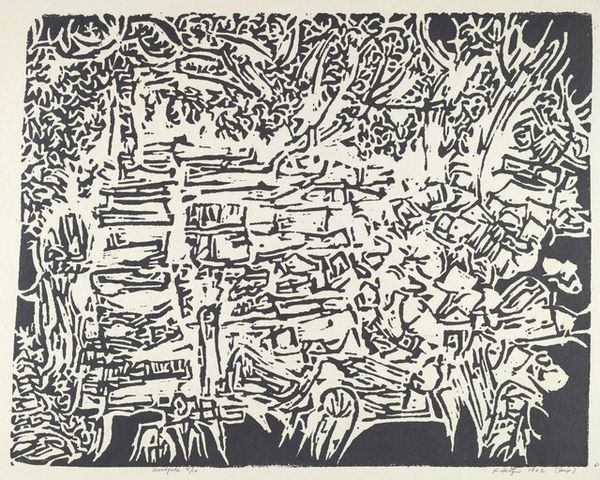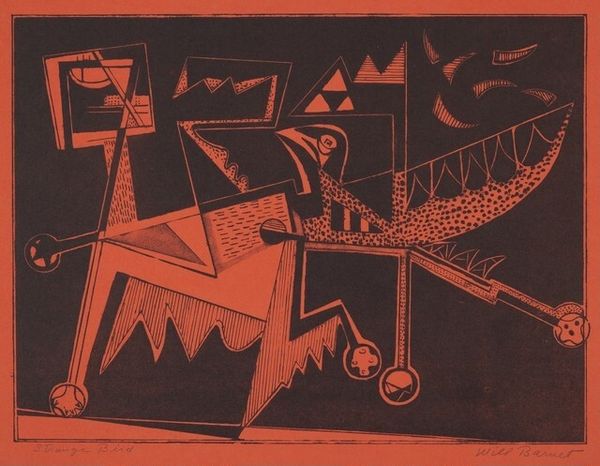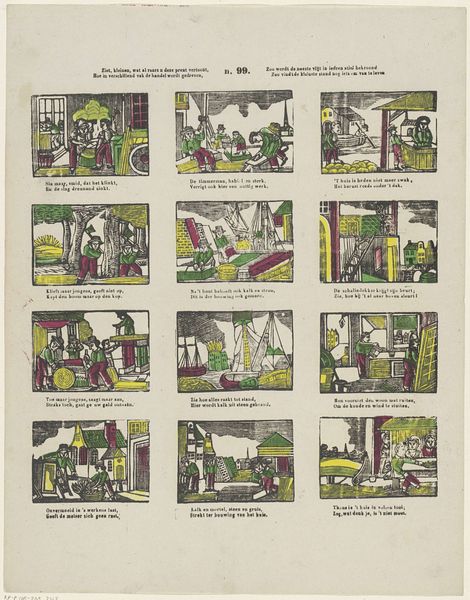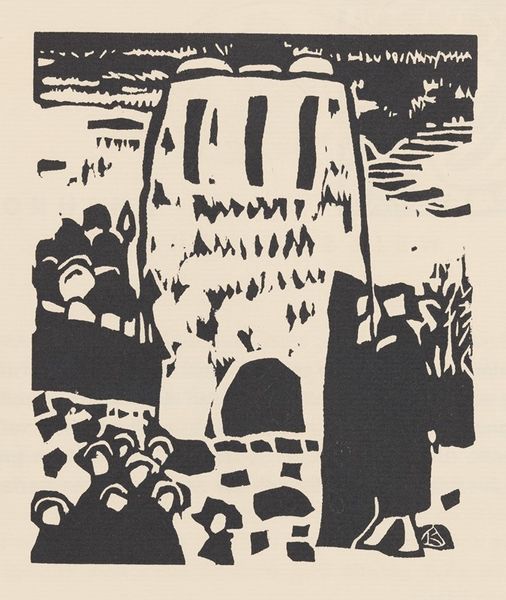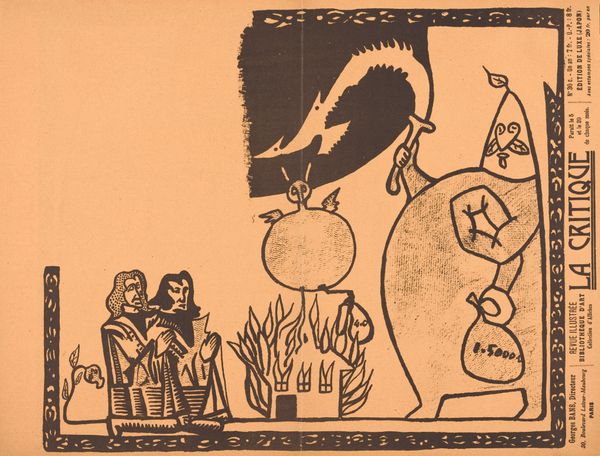
graphic-art, lithograph, color-lithograph, print
#
graphic-art
#
narrative-art
#
lithograph
#
color-lithograph
# print
#
book
#
figuration
#
expressionism
#
comic art
Dimensions: 9 1/2 x 11 1/2 in. (24.13 x 29.21 cm) (sheet)
Copyright: No Copyright - United States
Curator: This is a plate from "The Dreaming Youths," a lithograph possibly created by Oskar Kokoschka between 1907 and 1917. It resides now at the Minneapolis Institute of Art. I find it so fascinating; what's your first take? Editor: My goodness, it’s like a slightly unsettling children’s book illustration. The colors are bright, almost aggressively cheerful, but the scene itself feels… off. What’s with the floating fish? Curator: I see what you mean! The visual language seems rather bold for its time. Kokoschka was, after all, a leading figure in Expressionism, which sought to convey intense emotional experience. There’s an interesting dissonance with the seeming lightheartedness. Look at the solid, bright fields of color made through the lithographic printing process. Editor: Right, and you've got this very direct, almost primitive, quality in the way he’s depicted the figures. Their forms are simplified, but it seems more like an intentional distancing effect. Lithography at this time opened many avenues for social commentary and accessible dissemination, particularly since printmaking was deemed a 'lesser' art in academic circles. Do you think Kokoschka's piece deliberately addresses this perceived value hierarchy? Curator: I love that reading! I suspect Kokoschka found lithography quite liberating. The medium allowed him to push boundaries, merging high art ideals with what was considered craft. You can almost feel a subversive humor, like he's winking at the establishment while exploring the darker recesses of youthful anxieties and desires, not only that, the artist incorporated German poetry into the print. I find it gives an extra eerie feel to it. Editor: Yes, absolutely. This really encourages me to consider this in context to a broader network of artists using affordable materials and challenging conventions. It really does change the way we consider traditional methods of art production, doesn't it? Well, this has given me a whole new framework with which to consider the social value and democratization of printmaking. Curator: Indeed! And for me, it reiterates how powerful seemingly simple images can be in conveying deeply complex emotional and societal reflections.
Comments
No comments
Be the first to comment and join the conversation on the ultimate creative platform.
